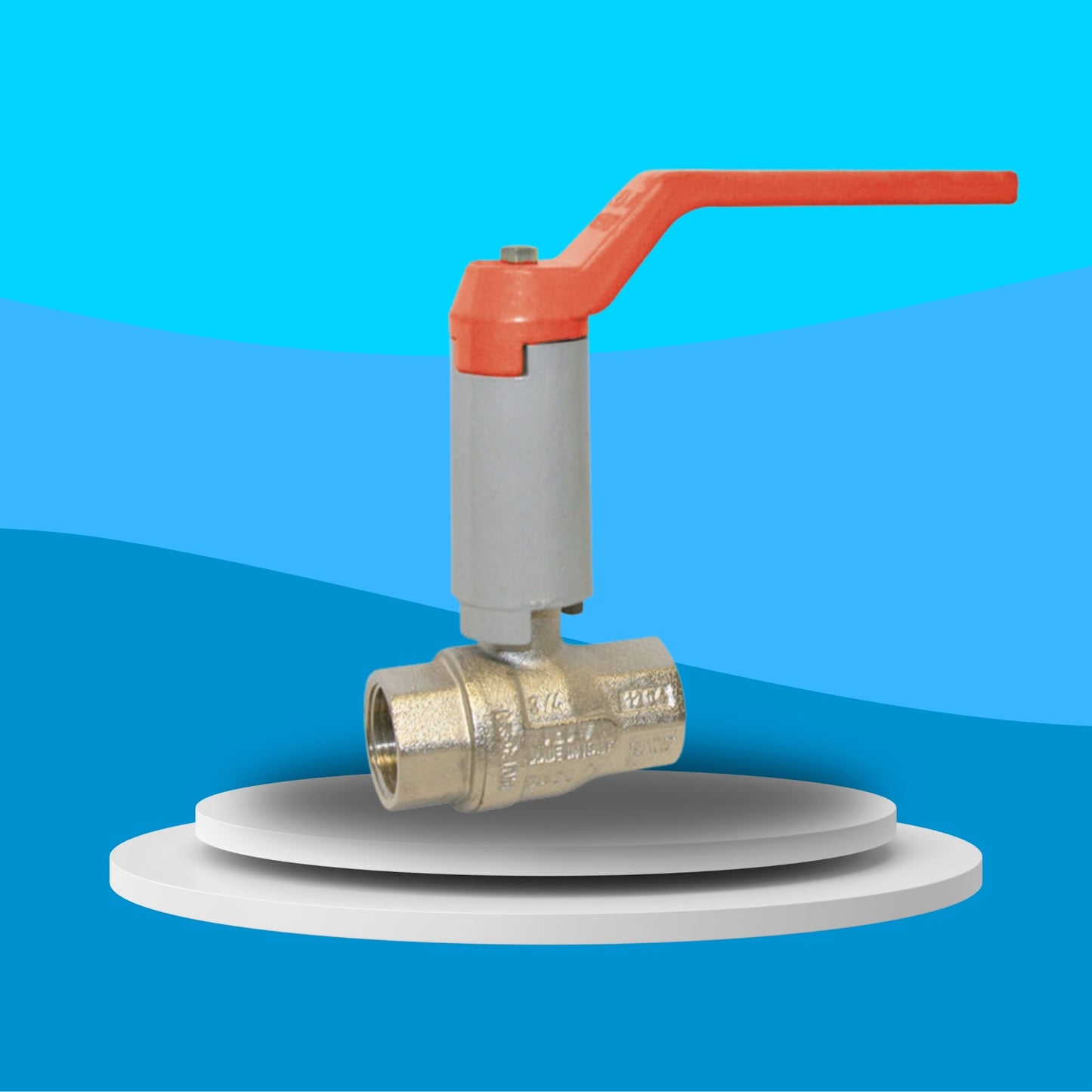Wras Valves
Wras Approved Brass Ball Valve with Extension - Screwed BSPP (Red Lever Operated)
Wras Approved Brass Ball Valve with Extension - Screwed BSPP (Red Lever Operated)
Couldn't load pickup availability
WRAS Approved | Screwed BSPP | Full Bore | Red Lever | Extension Neck
The WRAS Approved Brass Ball Valve with Extension and Screwed BSPP ends is designed for reliable on/off control in potable water systems, heating circuits, and general-purpose fluid applications. Manufactured from high-quality brass and featuring a WRAS-approved design, this valve meets the strict regulatory standards required for use in domestic and commercial water supply installations across the UK.
The extension neck ensures that the operating lever is raised above insulation, pipe lagging, or difficult-to-reach areas—making it easier to operate even when installed in tight or concealed spaces. The red lever handle offers intuitive control and visual identification, while the full bore design minimises pressure loss and supports unrestricted flow.
With screwed BSPP threaded connections, this valve offers a secure and straightforward fit to compatible pipework, and the robust brass construction ensures long-term corrosion resistance, mechanical strength, and dependable shut-off performance.
WV - 4179
Share

FAQ's
What is the difference between a valve and an actuator?
What types of actuators are available?
The main types of actuators are:
Pneumatic actuators – use compressed air for fast, reliable operation.
Electric actuators – use electrical power for precise control.
Hydraulic actuators – use fluid pressure for high-torque applications.
Each type offers unique advantages depending on the environment, media, and system control needs.
How do I choose the right actuator for my valve?
To select the correct actuator, consider:
Valve type and torque requirement
Power source available (air, electric, or hydraulic)
Operating environment (temperature, humidity, hazardous area)
Control signal type (on/off or modulating)
Matching actuator torque and compatibility with the valve’s ISO mounting ensures reliable performance.
What are the main types of valves used in automation?
The most common valves in automated systems include:
Ball valves – for tight shutoff and quick operation.
Butterfly valves – for larger flow control with compact design.
Globe valves – for precise throttling and flow regulation.
Check valves – to prevent backflow.
Gate valves – for full bore flow isolation.
What’s the difference between a double-acting and spring-return actuator?
Double-acting actuators use air (or power) to both open and close the valve.
Spring-return actuators use air to open (or close) the valve, and a built-in spring to automatically return it to a safe position when power or air is lost — ideal for fail-safe operation.
How often should valves and actuators be serviced?
Regular maintenance intervals depend on operating conditions, but a good rule of thumb is to inspect every 6–12 months.
This includes checking for leaks, lubrication, seal wear, and actuator responsiveness to prevent unexpected downtime.

